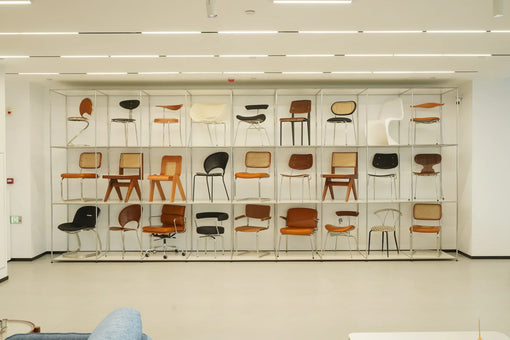
- Article published at:
- Article author: Unica Furn
- Article tag: The Unicafurn Difference
- Article comments count: 0
In the world of furniture, the "joint" is where the truth lives.
You can hide cheap particle board under a nice veneer. You can disguise hollow legs with a heavy coat of paint. But you cannot fake a joint. It is the single point of failure for 99% of furniture. If you’ve ever had a bookshelf that started to wobble after a year, or a chair leg that stripped its screw hole, you’ve experienced a failed joint.
For modular furniture, the stakes are even higher. A modular system isn't just built once; it’s built, taken apart, and rebuilt over a lifetime.
At Unicafurn, we believe the difference between a toy and a tool lies in the connection. Here is why the UF Nexus joint is engineered unlike anything else on the market—and why it’s not just about the screws.
The Enemy: Friction vs. Tension
Most flat-pack furniture relies on friction. You drive a sharp screw into wood or plastic. The screw bites into the material, creating friction that holds it in place.
The problem? Every time you wiggle the furniture (or move house), that screw eats away a little more of the material. The hole gets bigger. The friction disappears. The joint fails.
A great modular joint, like the one in the UF Nexus system, relies on tension and mechanical expansion. It works like an anchor bolt in a concrete wall, not a wood screw in a plank.
Anatomy of the Nexus Joint: The "Six-Point" Grip
We don't just "screw parts together." We utilize a precision-engineered expansion system. Here is what happens inside the tube every time you tighten a connection:
1. The Solid Core (Not Plastic) At the heart of every connection is our connector block. While others use zinc alloy (which can snap) or heavy-duty plastic (which deforms), we use a high-density metal core. It is the unshakeable foundation of the system.
2. The Expansion Sleeve (The Secret Weapon) This is the piece most people ignore, but it is the most critical. When you insert the connector into the UF Nexus 304 Stainless Steel Tube, it fits snugly. As you turn the tool, the internal screw pulls a wedge that physically expands the sleeve outwards.
3. The "Inside-Out" Pressure This expansion creates immense pressure against the inside walls of the steel tube. It grips the tube from the inside out, creating a bond that is incredibly strong yet completely reversible. It doesn't rely on biting into the metal; it relies on pure, distributed pressure. This is why you can assemble and disassemble it 100 times, and the 100th time will be just as tight as the first.
The "Click" of Quality
There is a sensory aspect to a great joint. We call it "The Click" (even if it's silent).
When you assemble lesser modular furniture, the stopping point feels "mushy." You keep turning the screwdriver, unsure if it's tight enough, often over-tightening and cracking the component.
With the UF Nexus System, the engineering tolerances are so precise that you hit a definitive "hard stop." You feel the mechanical lock engage. The frame becomes instantly rigid. There is no wobble, no play, no doubt.
Conclusion: Small Parts, Big Difference
It is easy to fall in love with the shiny chrome tubes or the sleek colored panels of our system. But the soul of Unicafurn isn't in the parts you see; it's in the parts you don't.
We obsess over the joint because that is where the promise of "lifetime furniture" is kept. It’s a tiny piece of engineering that ensures your furniture stands as strong in 20 years as it does today.
FAQs
1. Can I over-tighten the connectors? It is difficult to damage the system by hand, but yes, you should respect the mechanics. Because the system relies on expansion, once you feel the firm resistance (the "hard stop"), the joint is secure. You do not need to use excessive force or power tools.
2. Why do you use chrome-plated connectors with stainless steel tubes? Actually, we don't. This is a common misconception. In cheap systems, mixing metals (like chrome-plated zinc with steel) can lead to corrosion or "seizing" over time. The UF Nexus system uses compatible, high-grade metals throughout the connection assembly to ensuring they never rust together or get stuck.
3. If I lose a connector screw, can I buy a replacement at a hardware store? While the thread pitch is a standard metric size, the head and length are custom-engineered to work with our specific expansion wedge. Using a generic screw might not engage the expansion mechanism correctly. We always recommend contacting our support team for exact replacement parts to ensure safety and stability.
Learn More









